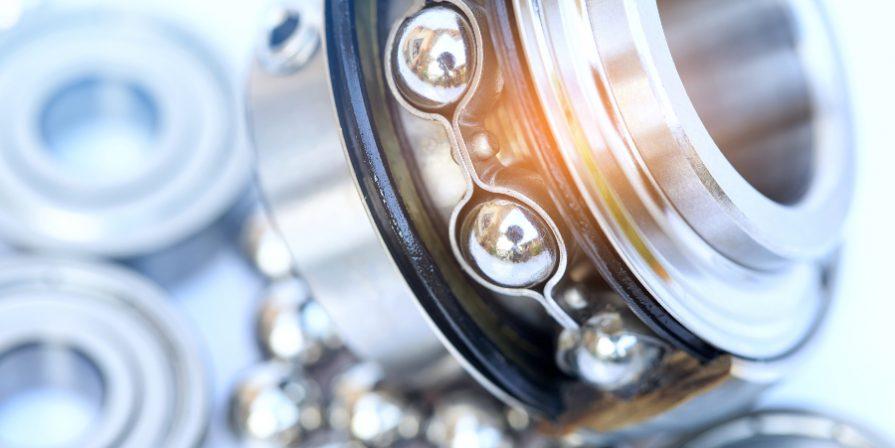Oils and greases temporarily protect metal surfaces from corrosion during storage and processing. Long-term corrosion protection, however, is only achieved through surface technology. Specialized coatings act as barriers, preventing environmental factors from reaching the metal. The prerequisite is that surfaces must be clean and free of oil and grease. That is why degreasing agents are used in surface pretreatment. Here is how it works.
Why Is Surface Pretreatment Necessary?
Every surface treatment process includes pretreatment of the base material. In metalworking, forming and cutting fluids are essential, and components are often preserved with corrosion protection oils. These oils work because they spread evenly across the workpiece and adhere well, preventing moisture and oxygen in the air from reaching the metal.
If a metal surface is to effectively receive a conversion coating, paint finish, or electroplated layer, the process chemicals must reach every part of the material. Any oil or grease residue from metalworking would block certain areas and contaminate the process chemicals. Pretreatment ensures these residues are removed. To do this, different degreasing agents and methods are available.
How Do Degreasing Agents Differ?
In general, there are three main types of degreasing agents: organic solvents, water-based cleaning solutions, and cleaners that contain enzymes. Organic solvents can fully mix with and dissolve greases. They work very quickly, even at low temperatures, and usually evaporate without leaving residues along with the dissolved oils. However, this evaporation can release harmful substances into the environment, pose health risks for workers, and contribute to climate change. OSHA workplace safety standards require proper ventilation and air filtration systems when using organic solvents to protect employee health. These control measures can reduce emissions but cannot eliminate them entirely. Because of these drawbacks, organic solvents—despite their effectiveness—are used less and less.
Water-based degreasers are becoming increasingly popular. In these solutions, surfactants bind to the grease and disperse it in the water. Surfactants are chemicals with molecules that have a water-attracting end and a grease-attracting end. The grease-attracting end bonds with the oil particles, while the water-attracting end makes the whole structure mix with water. This process often works best at elevated temperatures, but more and more cleaning solutions are effective even at lower temperatures.
Which Methods Are Used in Surface Pretreatment?
Degreasing agents are applied to metal surfaces using either spraying or immersion methods. Manual degreasing with cloths and brushes is rare today. In spraying, the cleaning solution is forced through nozzles at high pressure onto the metal surface, where the chemical cleaning action is supported by mechanical force. This dissolves and removes the greasy residue. To improve sustainability, used cleaning solutions are normally collected and treated so that they can be partially reused. This reduces chemical consumption and waste.
However, with metal parts that have complex shapes, holes, or threads, the spray method may not reach every surface area. In these cases, immersion methods are used. Parts are submerged in large tanks filled with a degreasing solution. Cleaning takes more time but it can be accelerated by agitating the solution, moving the parts, or using ultrasonic cleaning. During circulation, some of the fluid can be filtered and treated, which extends bath life, reduces wastewater, and saves process chemicals.
How Are Degreasing Residues Removed from the Parts?
The pretreatment process includes multiple steps, including both rinsing and drying. If any degreasing agent or water remains on the surface and dries there, it can cause defects in subsequent surface treatment processes. Coatings could peel, conversion coatings might not form properly, and paint flaws could occur. To prevent this, degreasing agents and cleaning residues must be completely rinsed away.
Rinsing is done in multiple stages. The final rinse uses fully deionized water, because even tap water contains minerals that could interfere with coating adhesion. To save water, rinsing almost always follows a cascade system: as the parts move through each tank, the rinse water flows in the opposite direction. The freshest deionized water enters at the final tank and is still clean enough by the first tank to perform effective rinsing.
Summary: Degreasing Agents in Surface Pretreatment
Metalworking leaves oily and greasy residues on parts, which can interfere with surface treatments. Degreasing agents remove these contaminants—an essential step for ensuring high-quality results in subsequent surface finishing processes.
Modern facilities must also comply with EPA air quality standards and waste disposal regulations when selecting and implementing degreasing systems. Because of this, degreasing is an integral part of surface pretreatment, which is typically done utilizing spraying or immersion methods. Degreasing agents include organic solvents, water-based cleaners with surfactants, or enzyme-based solutions.
 Kluthe Magazine
Kluthe Magazine





